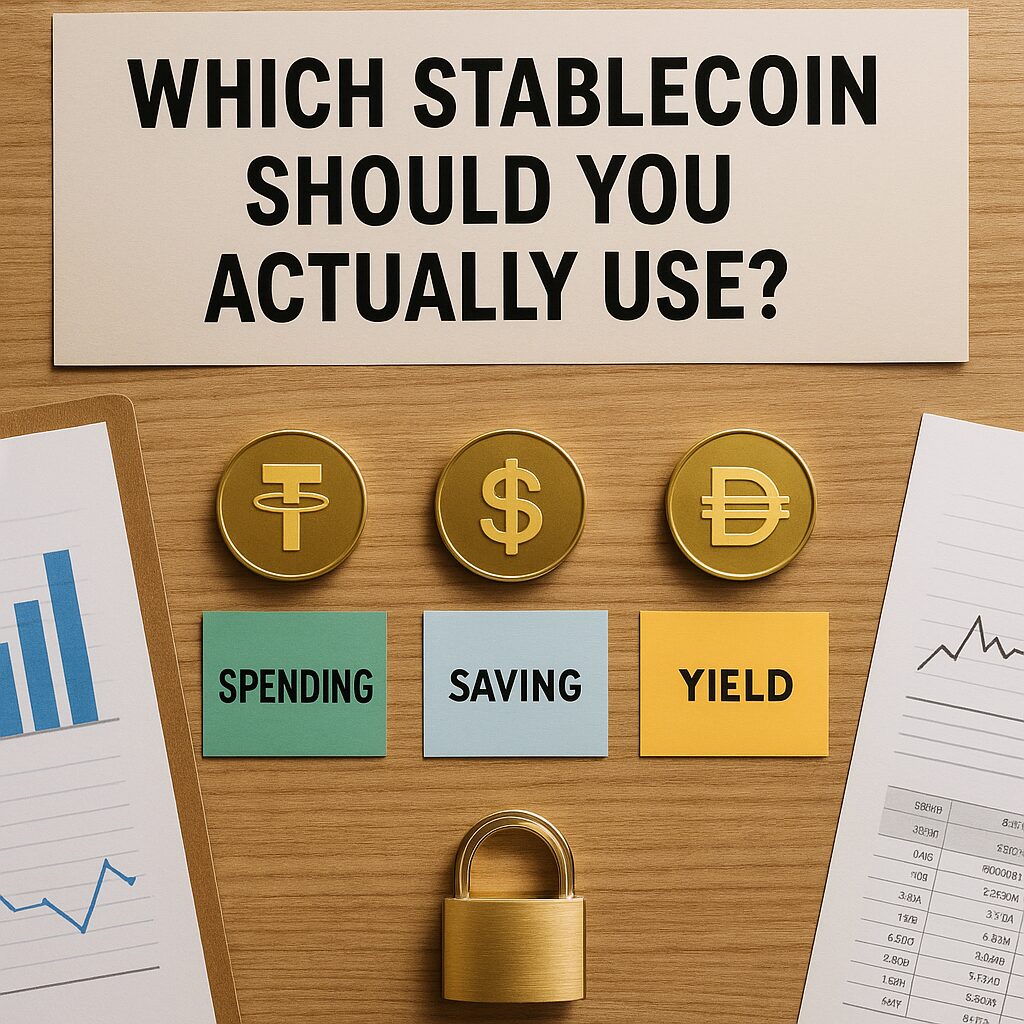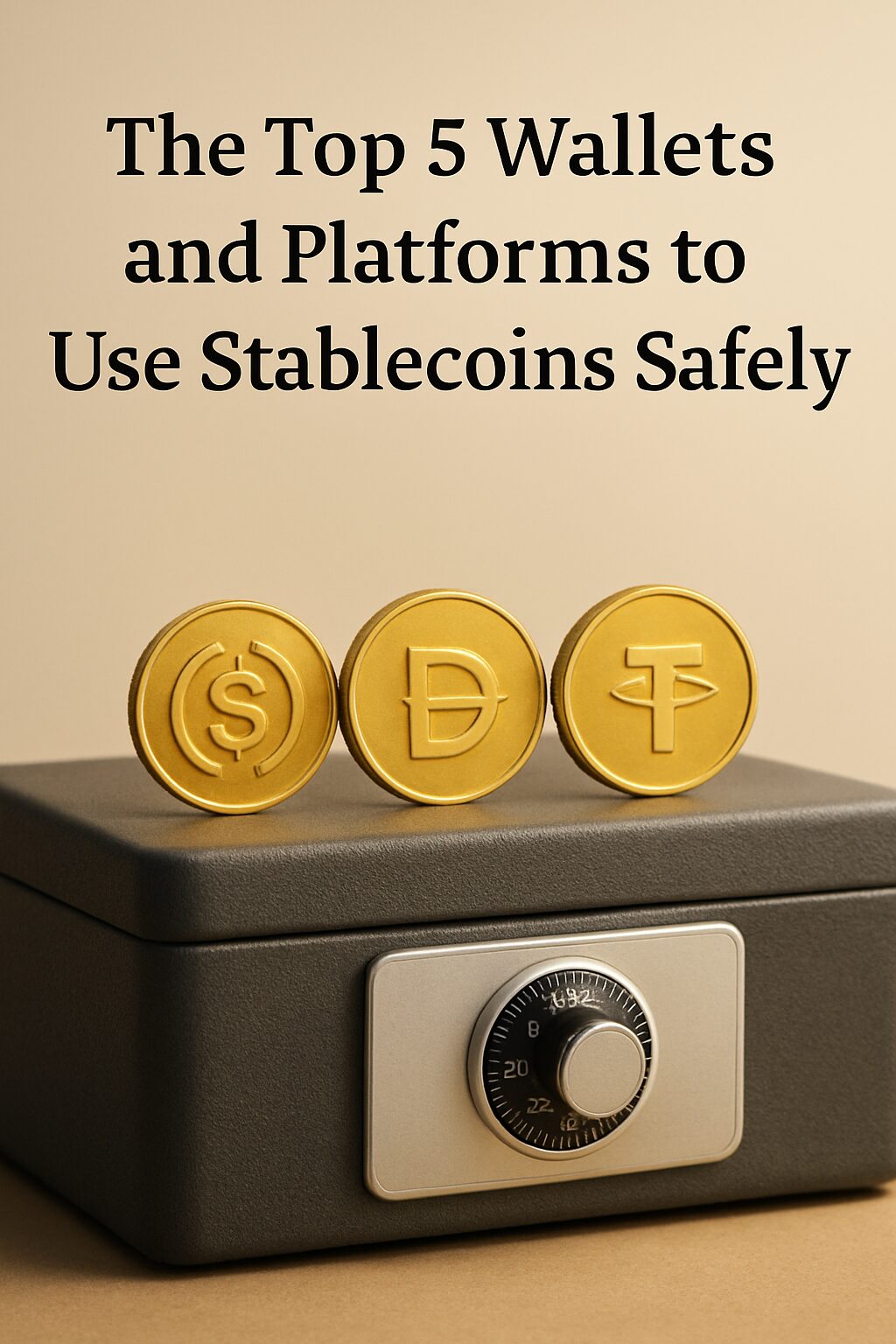Not All Stablecoins Are Created Equal
You’ve heard of USDC, USDT, and DAI.
They all promise “stability,” but they differ drastically in risk, purpose, transparency, and utility.
So which one should you actually use?
This guide breaks it down by real-life use cases:
- Saving
- Spending
- Earning yield
- Cross-border transfers
- DeFi participation
- Long-term holding
Let’s match the right stablecoin to your goal.
For Saving: USDC or DAI
When you’re parking money for a while, you need:
- High stability
- Strong backing
- Low depeg risk
USDC
- Backed 1:1 by U.S. dollar reserves
- Monthly audits by Circle
- Widely accepted in exchanges and wallets
- Supported on Ethereum, Solana, Avalanche, and more
Best For
- Short-term savings
- Holding value during crypto volatility
- Compliant U.S.-based reserves
DAI
- Backed by crypto collateral (e.g., ETH, wBTC)
- Managed by MakerDAO protocol
- Decentralized, censorship-resistant
- Slightly more volatile in edge cases
Best For
- Decentralized savings
- DeFi-native users who distrust centralized issuers
For Spending and Daily Use: USDT
When you want liquidity and speed, USDT (Tether) dominates:
- Accepted nearly everywhere
- Highest stablecoin trading volume
- Low transaction costs on Tron and Solana
- Available on most centralized exchanges (CEXs)
Concerns
- Reserve transparency criticized
- Centralized issuer (Tether Ltd)
- Regulatory risk in some countries
Best For
- Peer-to-peer payments
- Buying crypto quickly
- Cash-like flexibility, especially in Asia & Latin America
For Earning Yield: DAI or GUSD
Want passive income?
Some stablecoins pay you just for holding or depositing.
DAI + DeFi
- Use DAI on Aave, Compound, or Maker to earn variable APR
- Often higher returns than centralized options
- Interest from lending or protocol rewards
GUSD (Gemini Dollar)
- U.S.-regulated
- FDIC-like protections for certain accounts
- Earn up to 7–8% APY via Gemini Earn (availability varies)
Best For
- Passive income seekers
- Long-term holders with a tolerance for smart contract risk
For International Transfers: USDC (on Solana) or CELO Dollar
Speed and low fees matter when sending money abroad.
USDC (Solana)
- Transfers take seconds
- Almost zero gas fees
- Widely used in cross-border fintech apps (e.g., Circle, Coinbase Wallet)
CELO Dollar (cUSD)
- Built for mobile-first economies
- Ideal for use in Africa, Latin America
- Low-fee, mobile-based DeFi integrations
Best For
- Family remittances
- Freelancers working internationally
- Unbanked populations
For DeFi Ecosystems: DAI, FRAX, or LUSD
DeFi-native stablecoins are built to interact seamlessly with protocols:
DAI
- Core to Maker, Aave, and Curve
- Deep liquidity pools
- Strong community governance
FRAX
- Fractional-algorithmic hybrid
- High efficiency in Curve and Convex
- Volatility has decreased over time
LUSD (Liquity USD)
- Overcollateralized by ETH only
- Cannot be blacklisted
- Resistant to censorship and oracle manipulation
Best For
- Yield farming
- DAO treasuries
- Decentralized portfolios
For Long-Term Holding: USDC or TrueUSD
When holding stablecoins for months or years, you need trust and regulation.
USDC
- Most regulated and transparent
- Reserve audits available
- Widely accepted across DeFi and CEXs
TrueUSD (TUSD)
- Real-time reserve attestation
- Lower market cap, but growing
Best For
- Investors who prioritize trust and stability
- Businesses or institutions storing cash reserves in crypto form
Summary Table: Best Stablecoin by Purpose
| Use Case | Best Stablecoin(s) | Reason |
|---|---|---|
| Saving | USDC, DAI | Strong peg, transparency |
| Spending | USDT | Widely accepted, fast, low fees |
| Earning Yield | DAI, GUSD | DeFi yield + centralized interest options |
| International Send | USDC (Solana), cUSD | Fast, cheap, mobile-friendly |
| DeFi Participation | DAI, FRAX, LUSD | Decentralized, composable |
| Long-Term Holding | USDC, TUSD | Regulation and stability |
Final Thoughts: The Right Stablecoin Is the One You Use
There’s no one-size-fits-all stablecoin.
Instead, ask yourself:
- Are you spending or saving?
- Are you risk-averse or DeFi-native?
- Do you need compliance or decentralization?
Your goal determines your coin.
And the good news?
You can always split across multiple stablecoins to reduce risk.









